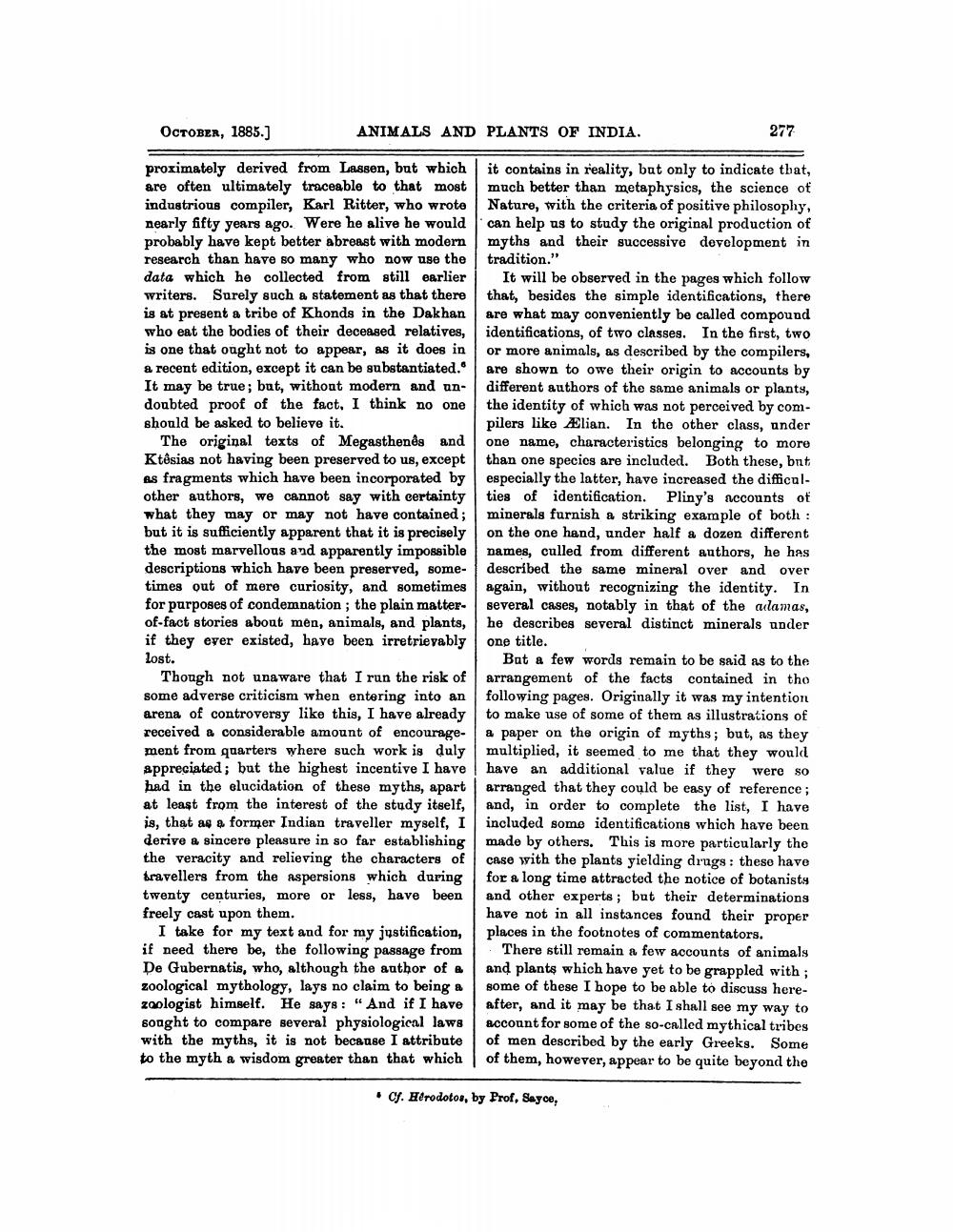________________
OCTOBER, 1885.)
ANIMALS AND PLANTS OF INDIA.
277
proximately derived from Lassen, but which are often ultimately traceable to that most industrious compiler, Karl Ritter, who wrote nearly fifty years ago. Were he alive he would probably have kept better abreast with modern research than have so many who now use the data which he collected from still earlier writers. Surely such a statement as that there is at present a tribe of Khonds in the Dakhan who eat the bodies of their deceased relatives, is one that ought not to appear, as it does in a recent edition, except it can be substantiated. It may be true; but, without modern and undoubted proof of the fact, I think no one should be asked to believe it.
The original texts of Megasthends and Ktosias not having been preserved to us, except As fragments which have been incorporated by other authors, we cannot say with certainty what they may or may not have contained; but it is sufficiently apparent that it is precisely the most marvellous and apparently impossible descriptions which have been preserved, sometimes out of mere curiosity, and sometimes for purposes of condemnation; the plain matterof-fact stories about men, animals, and plants, if they ever existed, have been irretrievably lost.
Though not unaware that I run the risk of some adverse criticism when entering into an arena of controversy like this, I have already received a considerable amount of encourage- ment from quarters where such work is duly appreciated; but the highest incentive I have had in the elucidation of these myths, apart at least from the interest of the study itself, is, that as a former Indian traveller myself, I derive a sincere pleasure in so far establishing the veracity and relieving the characters of travellers from the aspersions which during twenty centuries, more or less, have been freely cast upon them.
I take for my text and for my justification, if need there be, the following passage from De Gubernatis, who, although the author of a zoological mythology, lays no claim to being a zoologist himself. He says: "And if I have songht to compare several physiological laws with the myths, it is not because I attribute to the myth a wisdom greater than that which
it contains in reality, but only to indicate that, much better than metaphysics, the science of Nature, with the criteria of positive philosophy, can help us to study the original production of myths and their successive development in tradition."
It will be observed in the pages which follow that, besides the simple identifications, there are what may conveniently be called compound identifications, of two classes. In the first, two or more animals, as described by the compilers, are shown to owe their origin to accounts by different authors of the same animals or plants, the identity of which was not perceived by compilers like Alian. In the other class, under one name, characteristics belonging to more than one species are included. Both these, but especially the latter, have increased the difficulties of identification. Pliny's accounts of minerals furnish a striking example of both : on the one hand, under half a dozen different names, culled from different authors, he has described the same mineral over and over again, without recognizing the identity. In several cases, notably in that of the alamas, he describes several distinct minerals under one title.
Bat a few words remain to be said as to the arrangement of the facts contained in the following pages. Originally it was my intention to make use of some of them as illustrations of a paper on the origin of myths; but, as they multiplied, it seemed to me that they would have an additional value if they were so arranged that they could be easy of reference; and, in order to complete the list, I have included some identifications which have been made by others. This is more particularly the case with the plants yielding drugs: these have for a long time attracted the notice of botanists and other experts; but their determinations have not in all instances found their proper places in the footnotes of commentators.
There still remain a few accounts of animals and plants which have yet to be grappled with; some of these I hope to be able to discuss hereafter, and it may be that I shall see my way to account for some of the so-called mythical tribes of men described by the early Greeks. Some of them, however, appear to be quite beyond the
. Cf. Hérodotos, by Prof, Seyce,




